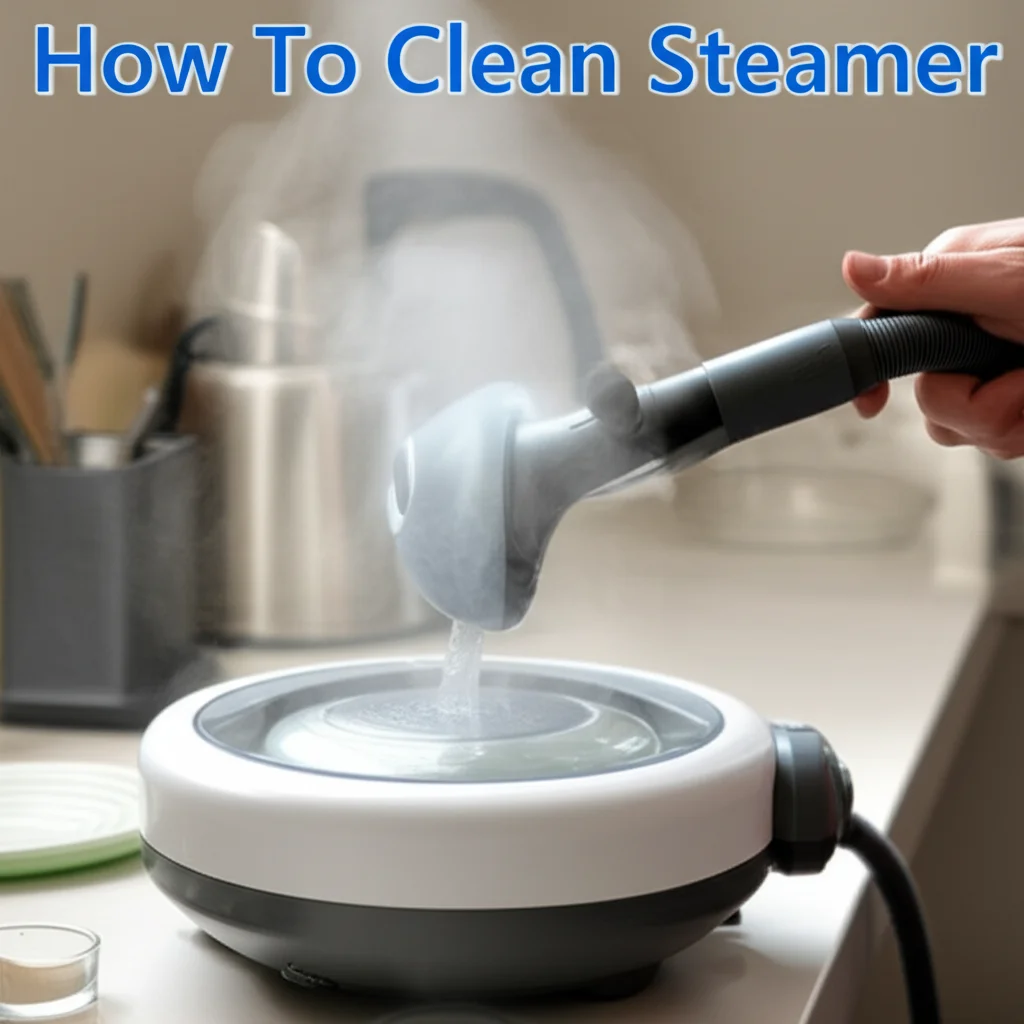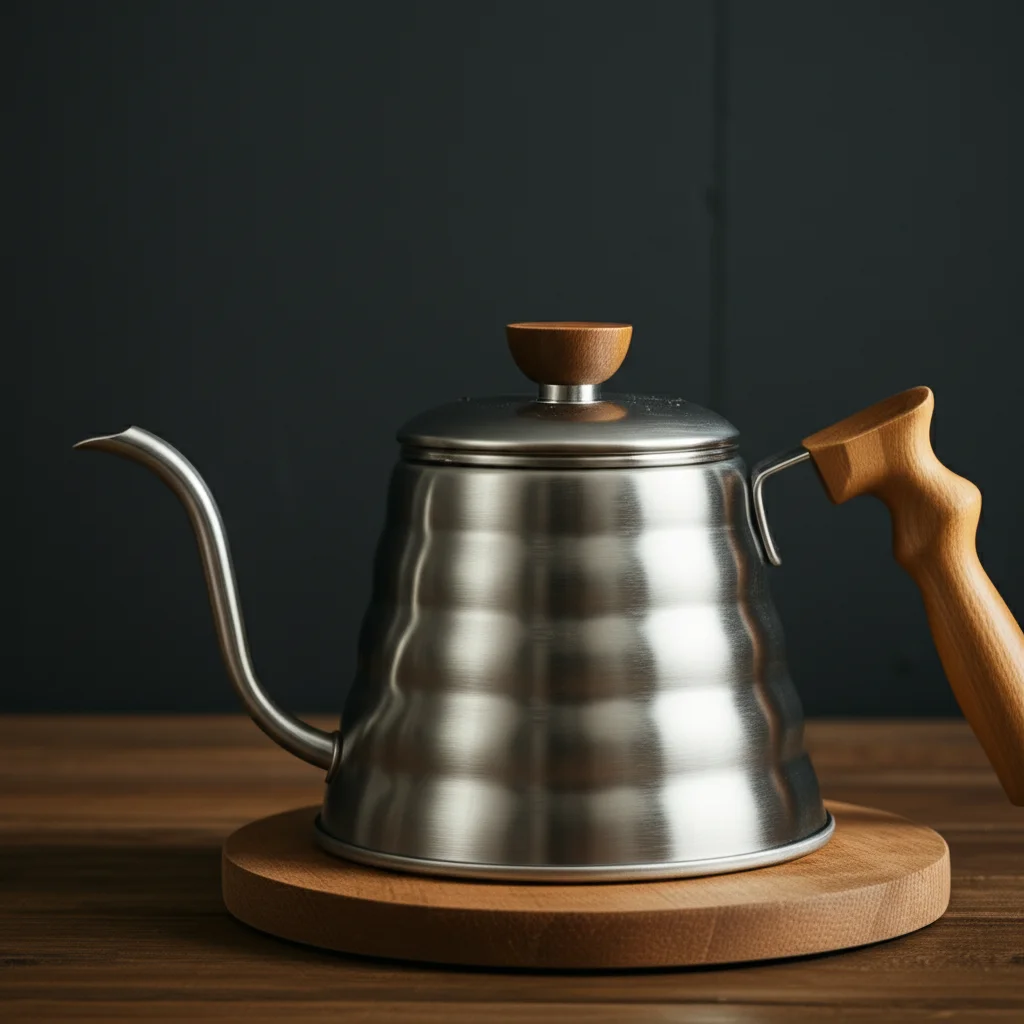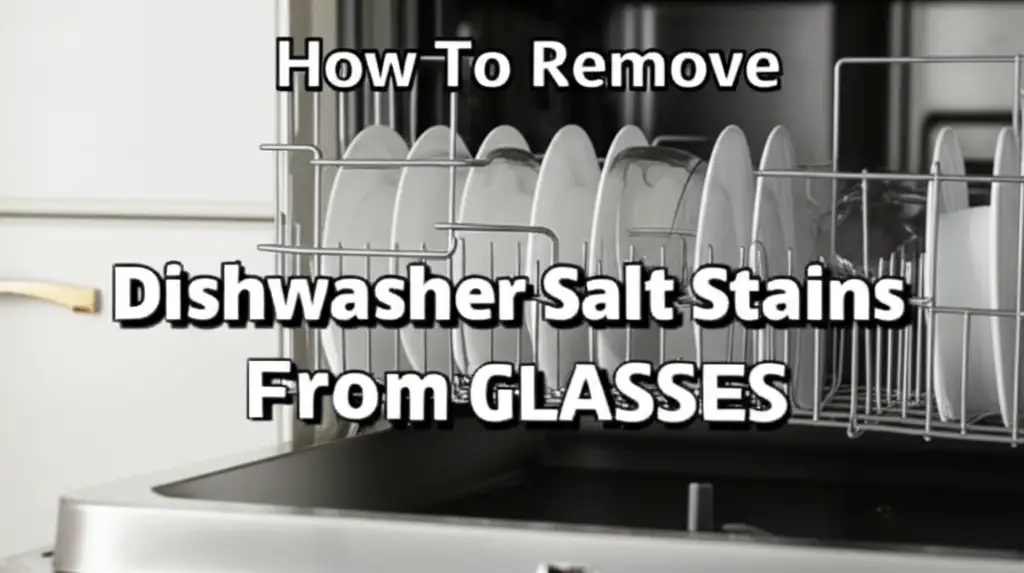· Todd Martin · Home Care · 21 min read
How To Clean Steamer

How To Clean Your Steamer for Peak Performance
Imagine the joy of perfectly steamed vegetables, tender fish, or wrinkle-free clothes. Steamers bring efficiency and health benefits to our daily lives. But what happens when mineral buildup or food residues start to diminish their magic? Neglecting cleaning can lead to reduced efficiency, unpleasant odors, and even damage to your appliance.
Understanding how to clean steamer components properly ensures your device performs its best. This guide provides comprehensive methods for various steamer types. We cover routine care, deep descaling, and tips for specific materials. By following these steps, you will keep your steamer in excellent condition. This article will help you master the art of steamer maintenance.
Takeaway
Keeping your steamer clean is simple and ensures it lasts longer and works better.
- Always empty and wipe down your steamer after each use to prevent residue buildup.
- Descale regularly with vinegar or lemon juice to remove hard water mineral deposits.
- Clean different steamer types, like food or garment steamers, with specific methods.
- Address clogs and odors promptly to maintain hygiene and efficiency.
Clear and Concise Answer
To clean a steamer, regularly empty and wipe down its components after each use. Perform deep descaling monthly or quarterly using white vinegar or lemon juice to remove mineral deposits from the water tank and heating element. Rinse thoroughly to ensure no cleaning solution remains before the next use, maintaining efficiency and hygiene.
Why Regular Steamer Cleaning Matters
Regular cleaning of your steamer is crucial for several reasons. It affects both its performance and the quality of what you are steaming. Over time, hard water leaves behind mineral deposits, often seen as white or chalky buildup. This limescale can clog heating elements and steam vents. When these parts are clogged, your steamer works harder to produce steam. This reduces its efficiency and increases energy consumption.
Food steamers can accumulate grease and food particles. If these residues are not cleaned, they can become breeding grounds for bacteria. They can also transfer unpleasant flavors or odors to your next meal. For garment steamers, mineral buildup can spit out white flakes onto your clothes. This defeats the purpose of steaming for a clean finish. Properly cleaning your steamer ensures consistent steam output. It also prevents cross-contamination and prolongs the life of your appliance. Investing a little time in cleaning saves you money and hassle in the long run.
Health and Hygiene Benefits
A clean steamer promotes better health. When you steam food, you expect it to be pure and untainted. However, if your steamer has mold or bacteria from old food residues, these can transfer to your meal. Regular cleaning prevents this. It ensures that the steam produced is clean and safe. This protects your family from potential foodborne illnesses.
For garment steamers, a clean water tank prevents dirty water from being pushed through. This avoids staining your clothes or leaving behind residues. Think of your steamer as a cooking utensil or a fabric care tool. Just like you clean your pots and pans, your steamer needs the same attention. Maintaining hygiene inside the steamer is vital for its primary function.
Protecting Your Investment
A steamer is an appliance you invest in for convenience and healthier living. Neglecting its care shortens its lifespan significantly. Mineral deposits can damage internal components over time. This leads to costly repairs or the need for a replacement. Regular descaling is like preventative maintenance for your car. It keeps the engine running smoothly.
By taking care of your steamer, you protect your initial investment. You ensure it continues to serve your needs for years to come. This saves you money in the long run and provides peace of mind. A well-maintained steamer performs optimally. It delivers consistent results every time you use it. This makes your steaming tasks easier and more effective.
Routine Steamer Care: After Each Use
Performing basic cleaning after every use is the first line of defense against buildup. This simple routine prevents most issues. It keeps your steamer ready for its next job. This quick cleanup takes only a few minutes. It is well worth the effort for a clean, efficient appliance.
Empty and Rinse the Water Tank
The most critical step after using any steamer is to empty its water tank. Do not leave stagnant water inside. Stagnant water can lead to mold growth and mineral deposits. After emptying, rinse the tank thoroughly with clean, fresh water. This washes away any loose particles or residues.
You should always discard any leftover water. It is important not to reuse water from a previous steaming session. Old water can contain minerals and impurities. These can contribute to faster buildup within the steamer. Fresh water always provides the best results for both steaming and cleaning. To learn more about maintaining other water-related systems, consider guides on how to clean a water tank or how to clean a water filter.
Wipe Down Surfaces and Components
After rinsing the tank, use a soft, damp cloth to wipe down all accessible surfaces. This includes the exterior, the lid, and any removable trays or baskets. For food steamers, pay special attention to areas where food might have splashed or condensed. A little soap can be used here. For garment steamers, wipe the steam head to remove any lint or debris.
This step prevents grime from hardening. It also keeps your steamer looking good. Ensure all parts are completely dry before storing the steamer. This prevents mold and mildew from forming. Proper drying helps maintain the integrity of the materials. This simple wipe-down is a powerful preventive measure against deeper cleaning needs.
Air Dry Thoroughly
Once wiped clean, allow all components to air dry completely. You can leave the water tank lid ajar to promote airflow. For baskets and trays, place them on a drying rack. Proper air drying is essential. It prevents moisture from getting trapped. Trapped moisture leads to unpleasant odors and mildew growth.
Ensure all parts are fully dry before reassembling or storing your steamer. This step helps maintain hygiene. It also prevents potential damage from trapped moisture. A completely dry steamer is a happy, ready-to-use steamer. This step might seem minor, but it is very important.
Descaling Your Steamer: The Vinegar Method
Descaling is essential for removing hard water mineral deposits. These deposits, often called limescale, can clog your steamer’s internal components. White vinegar is a natural and effective descaling agent. It is safe for most steamers and an eco-friendly option. This method should be performed regularly, typically once a month or every few months. The frequency depends on your water hardness and how often you use the steamer.
Preparing the Vinegar Solution
First, make sure your steamer is cool and unplugged. Prepare a descaling solution using equal parts white vinegar and distilled water. For example, if your steamer tank holds 4 cups, use 2 cups of white vinegar and 2 cups of distilled water. Distilled water is recommended as it contains no minerals. This helps prevent future buildup.
Pour the mixture into the steamer’s water reservoir. If your steamer has removable parts like trays or baskets that also show buildup, you can soak them in a separate bowl with the same vinegar solution. For very heavy buildup, you can use a stronger vinegar solution, up to pure white vinegar, but always dilute it if your manufacturer recommends it.
Running the Descaling Cycle
Once the vinegar solution is in the tank, turn on your steamer. Let it run a full steaming cycle until the water tank is empty. This allows the hot vinegar solution to circulate through the heating element and steam vents. It dissolves the mineral deposits. For garment steamers, direct the steam into a sink or bucket. Avoid steaming valuable items during this process.
If your steamer has a “self-clean” or “descaling” function, follow the manufacturer’s specific instructions for this cycle. The steam will carry the vinegar’s descaling power through the system. You might notice some cloudy discharge, which indicates the mineral deposits are being dissolved. This is a good sign.
Rinsing and Final Steps
After the descaling cycle finishes and the steamer cools down, empty any remaining vinegar solution. Then, fill the water tank with fresh, clean water. Run one or two full steaming cycles with plain water. This rinses away any lingering vinegar residue and dissolved minerals. This rinse cycle is crucial to prevent the vinegar smell or taste from transferring to your food or clothes during subsequent uses.
Once rinsing is complete, unplug the steamer and let it cool. Wipe down all internal and external surfaces with a damp cloth. Make sure all parts are thoroughly dry before storing. This complete descaling process revitalizes your steamer. It restores its steaming power. For more tips on using vinegar for cleaning, check out how to clean shower with vinegar. This method is effective for various household items.
Descaling Your Steamer: The Lemon Juice Method
Lemon juice offers another natural and effective alternative for descaling your steamer. It contains citric acid, which is excellent at breaking down mineral deposits. Like vinegar, lemon juice is safe, non-toxic, and leaves a fresh scent. This method is particularly popular for food steamers, as it avoids any lingering vinegar odor. You can use this method with the same frequency as the vinegar method. Adjust based on your water hardness.
Preparing the Lemon Juice Solution
Start by ensuring your steamer is cool and unplugged. Mix equal parts fresh lemon juice (or bottled lemon juice) and distilled water. For example, if your tank holds 4 cups, use 2 cups of lemon juice and 2 cups of distilled water. Distilled water helps prevent future mineral buildup.
Pour this lemon juice solution into the steamer’s water reservoir. If your steamer has removable trays or baskets with visible mineral buildup, you can also soak these components in a separate bowl filled with the same solution. The natural acidity of the lemon juice will begin to dissolve the deposits. Freshly squeezed lemon juice is often more potent than bottled versions. However, both work effectively.
Running the Descaling Cycle with Lemon
Once the lemon juice solution is in the water tank, turn on your steamer. Let it run a complete steaming cycle until the tank is empty. This allows the heated lemon solution to circulate through the steamer’s internal parts. It targets and dissolves the mineral deposits. For garment steamers, direct the steam into a sink or bucket. Avoid steaming anything you plan to wear or use.
The heat enhances the citric acid’s ability to clean the heating element and steam vents. You might see some cloudy water or flakes indicating that limescale is being removed. This is a normal part of the descaling process. The gentle, fresh scent of lemon will also permeate the air, which many find more pleasant than vinegar.
Thorough Rinsing and Drying
After the descaling cycle is finished and the steamer has cooled down, discard any remaining lemon solution. Fill the water tank with fresh, clean water. Run one or two full steaming cycles with just plain water. This crucial rinsing step removes any residual lemon juice and dissolved minerals. It ensures no lemon scent or taste transfers to your food or clothes.
Once rinsing is complete, unplug the steamer and let it cool completely. Use a soft, damp cloth to wipe down all internal and external surfaces. Ensure all parts are thoroughly air-dried before reassembling or storing your steamer. This comprehensive lemon juice descaling process revitalizes your steamer. It leaves it sparkling clean and fresh-smelling, ready for its next use.
Deep Cleaning Different Steamer Types
Not all steamers are created equal, and their cleaning needs vary slightly. A food steamer, designed for culinary purposes, will face different challenges than a garment steamer, which focuses on fabric care. Understanding these distinctions helps you apply the most effective cleaning methods for your specific appliance. Proper deep cleaning ensures specialized functionality is maintained.
Cleaning a Food Steamer
Food steamers often encounter food residues, grease, and condensation from cooking. Beyond descaling the water tank, the food trays and lids need thorough cleaning. After each use, wash removable trays and lids with warm, soapy water. Use a non-abrasive sponge or brush to remove any stuck-on food. For tougher stains, you can soak the trays in hot, soapy water for 15-20 minutes before scrubbing.
For the base unit, wipe down the exterior with a damp cloth. Pay attention to any condensation around the heating element area, ensuring no food particles accumulate there. If you have a specific type of food steamer, like a bamboo steamer, it will require a gentler, more specialized cleaning approach to preserve its material. Regular deep cleaning of food contact surfaces is crucial for hygiene. This prevents bacterial growth and flavor transfer.
Cleaning a Garment Steamer
Garment steamers primarily deal with mineral deposits from water, lint, and fabric fibers. Their cleaning focus is on the water tank and the steam head. Regularly descale the water tank using the vinegar or lemon juice methods. This prevents white flakes from spitting onto your clothes.
The steam head often collects lint. Use a soft brush or a damp cloth to wipe it clean after each use. Check the steam nozzles for any visible blockages. You can use a toothpick or a small brush to clear them gently. Never use sharp metal objects, as they can damage the nozzles. For specific models, like a Rowenta steamer, always refer to the manufacturer’s instructions for specialized cleaning tips. Keeping the steam head clear ensures an even steam flow. This provides the best results for your garments.
Cleaning a Steam Cleaner (Multi-Purpose)
Some larger steam cleaners are designed for a variety of surfaces, from floors to upholstery. These multi-purpose devices also accumulate mineral deposits in their water tanks. The descaling methods with vinegar or lemon juice are equally applicable here. For the attachments, such as brushes, nozzles, and floor pads, they need separate cleaning.
After each use, remove and wash these attachments. Many plastic attachments can be washed with warm, soapy water. Fabric pads are often machine washable. Ensure all attachments are completely dry before storing them. Regularly check the hoses and nozzles for blockages, especially if you use them on heavily soiled surfaces. A clean steam cleaner ensures effective sanitization across your home.
Cleaning Specific Steamer Materials
Different steamer materials require specific care to prevent damage and ensure longevity. Understanding the properties of each material helps you choose the right cleaning products and techniques. This tailored approach safeguards your appliance. It also keeps it performing optimally. Ignoring material-specific care can lead to discoloration, corrosion, or weakened parts.
Stainless Steel Steamers
Stainless steel is durable but can show water spots and mineral stains easily. For daily cleaning, use a soft cloth with warm, soapy water. Wipe down the stainless steel surfaces thoroughly. To remove fingerprints or smudges, a microfiber cloth works wonders. For tougher stains or to restore shine, a specialized stainless steel cleaner is effective.
When descaling the internal parts of a stainless steel steamer, the vinegar or lemon juice methods are safe. After descaling, always rinse the stainless steel components thoroughly. This removes all acid residue. Dry the surfaces immediately with a clean, dry cloth to prevent new water spots. Polishing in the direction of the grain will give it a streak-free finish. Proper care keeps your stainless steel steamer gleaming.
Plastic Steamers
Plastic steamers are common due to their lightweight and affordability. However, plastic can absorb odors and become discolored over time, especially from food. For routine cleaning, wash removable plastic parts with warm, soapy water. A soft sponge is best to avoid scratching the surface.
For mineral buildup in the water tank, the vinegar or lemon juice descaling methods work well. Ensure thorough rinsing afterward, as plastic can retain odors more readily than other materials. If your plastic has absorbed food odors, a paste of baking soda and water applied for a few hours can help neutralize them. Avoid harsh abrasive cleaners or scouring pads. These can scratch the plastic. This causes it to become dull and less hygienic. Gentle care keeps plastic clear and clean.
Bamboo Steamers
Bamboo steamers are natural and require unique care. They should never be washed with soap or soaked in water for extended periods. Soap can be absorbed by the bamboo. This can then transfer flavors to your food. Soaking can cause the bamboo to warp or crack. After each use, simply rinse the bamboo steamer with hot water. Use a stiff brush to gently scrub away any food particles.
For stubborn stains, a paste of baking soda and water can be applied. Let it sit for a short period before scrubbing and rinsing. Always dry the bamboo steamer completely by air-drying it. Place it in a well-ventilated area. This prevents mold growth. Storing it properly also prevents warping. If you want a deeper dive, check out our guide on how to clean bamboo steamer. Proper care ensures your bamboo steamer lasts for many years.
Troubleshooting Common Steamer Cleaning Issues
Even with regular cleaning, you might encounter specific issues that need addressing. These common problems can affect your steamer’s performance and cleanliness. Knowing how to troubleshoot them helps you maintain your appliance effectively. Quick fixes often prevent bigger problems down the line.
Dealing with Stubborn Mineral Buildup
Sometimes, routine descaling might not be enough for very stubborn mineral deposits. This often happens in areas with extremely hard water or if the steamer has been neglected for a long time. For these tough cases, you can try a stronger solution. Use undiluted white vinegar or a specialized commercial descaling solution. Follow the product’s instructions carefully for dilution and soaking times.
For localized buildup on heating elements or around steam vents, you can apply a vinegar-soaked cloth directly to the affected area. Let it sit for a few hours or even overnight. Then, gently scrub with a non-abrasive brush. After scrubbing, run several rinse cycles with plain water to flush out all dissolved minerals. Persistence with descaling is key for heavy buildup.
Removing Unpleasant Odors
Odors in a steamer usually come from old food residues or lingering cleaning solutions. If your steamer smells like stale water or food, even after cleaning, it needs more attention. For food steamers, ensure all parts that contact food are thoroughly cleaned. This includes trays and lids. Soaking these parts in a solution of baking soda and water can neutralize odors.
For the water tank, after descaling with vinegar or lemon, run extra rinse cycles. You can also add a tablespoon of baking soda to a tank of water. Let it sit for an hour, then run a steaming cycle with it. Follow up with more plain water rinses. Always ensure all parts are completely dry before storage. A well-ventilated storage area helps. This prevents new odors from forming.
Clearing Clogged Steam Vents
Clogged steam vents directly impact your steamer’s efficiency. They can lead to uneven steam distribution or no steam at all. Mineral buildup or small food particles are common culprits. First, ensure the steamer is unplugged and cool. Use a toothpick, a small needle, or a fine brush to gently clear the individual steam holes. Be very careful not to poke too hard or damage the material.
After manually clearing the visible blockages, perform a full descaling cycle with vinegar or lemon juice. This helps flush out any internal clogs that manual clearing couldn’t reach. If the problem persists, consult your steamer’s manual. Some models have specific instructions for clearing blockages. Regular descaling helps prevent these clogs from forming.
Maintenance Tips for a Long-Lasting Steamer
Beyond cleaning, several maintenance practices can extend your steamer’s lifespan. These tips focus on how you use and store your appliance. Following these guidelines ensures your steamer remains a reliable kitchen or laundry aid for many years. They complement the cleaning routines.
Use Distilled or Filtered Water
Hard water is the primary cause of mineral buildup in steamers. To significantly reduce limescale formation, use distilled or filtered water instead of tap water. Distilled water contains no minerals. Filtered water has fewer minerals than tap water. This small change greatly reduces the frequency and intensity of descaling needed. It also makes your cleaning routine easier.
While it might seem like a minor detail, the type of water you use has a major impact on your steamer’s health. This simple step can prolong the life of your heating element. It also ensures consistent steam quality. It’s a proactive measure that saves you time and effort in cleaning. For general water quality information, you might find our guide on how to clean water filter useful.
Proper Storage Techniques
Storing your steamer correctly prevents damage and keeps it ready for use. Always ensure all parts are completely dry before storing. Store the steamer in a cool, dry place. Avoid areas with high humidity, like under a leaky sink. Trapped moisture can lead to mold, mildew, or corrosion, especially for metal components.
If your steamer has a detachable cord, coil it loosely and secure it. Avoid tightly wrapping it, which can damage the wiring over time. Store removable trays and lids separately if recommended by the manufacturer. This allows for better airflow. Proper storage protects your appliance from physical damage and environmental factors. It also helps prevent odors from developing between uses.
Regular Inspection
Periodically inspect your steamer for signs of wear, damage, or excessive buildup. Check the power cord for any fraying or cuts. Look at the water tank for cracks or discoloration. Examine the steam nozzles and vents for blockages. Early detection of issues can prevent them from becoming major problems.
If you notice any unusual sounds during operation or a significant drop in steam output, it might be time for a deep descaling or a professional check. Being proactive about inspections helps maintain the steamer’s safety and efficiency. It also keeps you aware of its condition. A quick visual check before and after each use can catch many issues early.
FAQ Section
How often should I clean my steamer?
You should empty and wipe down your steamer after every use. A deep descaling, using vinegar or lemon juice, is recommended monthly if you have hard water or use the steamer frequently. For soft water or occasional use, descaling every two to three months might suffice. Regular cleaning prevents stubborn buildup.
Can I use dish soap to clean the steamer’s water tank?
No, it is not recommended to use dish soap in the water tank. Soap residues can be difficult to rinse completely. They can also leave a film or transfer odors/tastes to your steamed food or clothes. Stick to natural descaling agents like vinegar or lemon juice for the internal water tank and heating elements. Use soap only for external surfaces and removable parts that do not contact the heating element directly.
What causes white flakes to come out of my steamer?
White flakes indicate mineral deposits, primarily limescale, breaking off the heating element or inner surfaces of your steamer. This happens when hard water minerals accumulate over time. Regularly descaling your steamer with white vinegar or lemon juice will dissolve these deposits and prevent flakes from appearing. Using distilled water can also significantly reduce this problem.
Is it safe to leave water in the steamer’s tank?
No, it is not safe or recommended to leave water in your steamer’s tank. Stagnant water can lead to mineral buildup, mold, and bacterial growth. Always empty the water tank after each use and allow it to air dry completely. This practice maintains hygiene and extends the life of your appliance.
Can I use commercial descaling products?
Yes, you can use commercial descaling products designed for small appliances like kettles or coffee makers. Always read the product instructions carefully. Ensure it is safe for your steamer’s specific materials. Rinse the steamer thoroughly after using commercial descalers to remove all chemical residues. Vinegar and lemon juice are effective natural alternatives.
My steamer smells bad after cleaning, what should I do?
A lingering smell often means residual cleaning solution or dissolved mineral deposits were not fully rinsed out. Run several additional cycles with fresh, clean water. For persistent odors, especially if they are from food, fill the tank with a solution of water and a tablespoon of baking soda. Run a cycle, then follow with more plain water rinses. Ensure all parts are thoroughly dried before storage to prevent mold.
Conclusion
Cleaning your steamer is a simple yet vital task that extends its life and ensures its optimal performance. By understanding how to clean steamer components thoroughly, you can prevent common issues like mineral buildup, unpleasant odors, and reduced efficiency. From routine wipe-downs to deep descaling with natural solutions like vinegar or lemon juice, each step plays a crucial role in maintaining your appliance. Remember to consider the specific material of your steamer, whether it’s stainless steel, plastic, or bamboo, and tailor your cleaning approach accordingly.
Using distilled water and practicing proper storage also contribute significantly to the longevity of your device. Embracing these cleaning and maintenance habits will keep your steamer ready to deliver fresh, healthy meals or crisp, wrinkle-free clothes whenever you need it. A clean steamer is not just about aesthetics; it is about efficiency, hygiene, and protecting your investment. Start your routine today and enjoy the lasting benefits of a well-maintained steamer!





